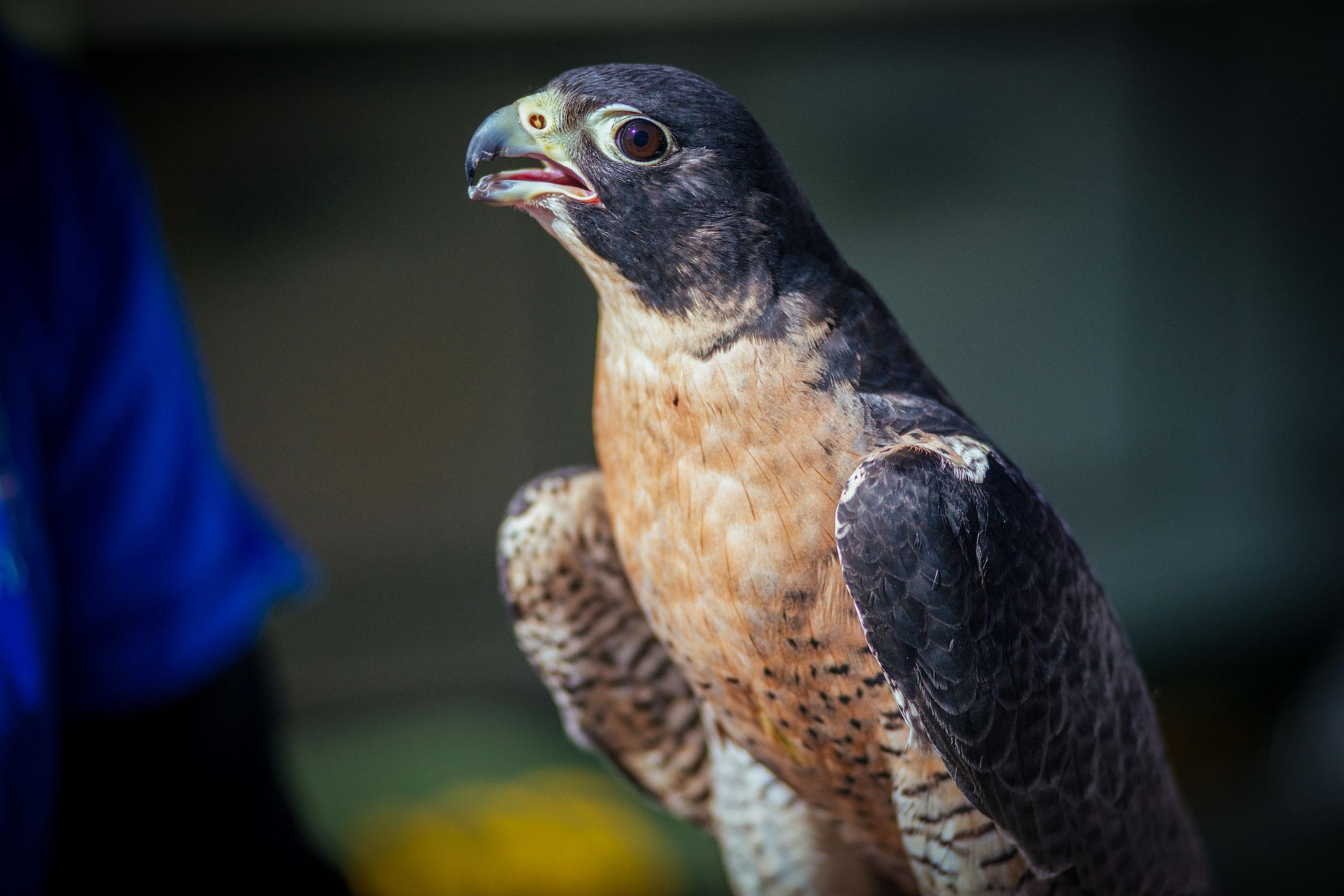
There was a time — a few decades ago — when peregrine falcons were a fixture of the Denver skyline, almost as common as the cash register building or maybe the gold dome.
“They were constantly in the paper and we could go out at lunch or during breaks and look up and sometimes see them soaring and swooping and gliding through the air, it was really cool to watch them,” said Marie Valenzuela, a downtown worker.

The headlines were a nice touch because the falcons hung over downtown from their perch atop the old Denver Post building at Broadway and 16th. It was part of a national Hail Mary pass to save the species.
“And then all of a sudden they were gone and I never found out what happened to them,” Valenzuela said. So she turned to Colorado Wonders to go bird sleuthing.
If you were to visit a Peregrine falcon at home, you’d best not be afraid of heights. Their typical roost is usually a thousand or so feet above the ground. The late Tom Cade, an ornithologist at Cornell University and an avid falconer, realized skyscrapers mimic the cliffs and canyons peregrines are drawn to. Even more, they provide ledges where falcons can build their simple nests, called scrapes (which makes skyscrapers all the more fitting).
Cities also have lots of pigeons, otherwise known as a tasty peregrine meal to go.
The idea came about in the 1970s, when the birds were considered extinct east of the Mississippi, and there were only 40 known pairs in the West. Cade founded The Peregrine Fund to help hatch the power-diving air missiles in captivity and relocate them to skyscrapers, and the wild too. It may have seemed outlandish, but with so few of the birds left, Erin Katzner, the Fund’s director of global engagement, said people were willing to give it a shot.
“It was sort of a stab in the dark, how do we help these birds that are in the wild, how do we help bolster their numbers and bring them back from the brink of extinction in a faster manner than would happen naturally in the wild by just removing DDT,” Katzner said.
DDT is a synthetic insecticide infamous for its environmental impact. Developed in World War II to kill mosquitos and prevent malaria, it was later widely used in agriculture. Another historical newsreel from the era shows the city of San Antonio, Texas fogging itself in an opaque cloud of DDT to ward off insects that were thought to cause Polio.
It’s hard to overstate its prevalence, but DDT didn’t harm peregrines directly. It moved up the food chain from tainted insects to hunted smaller birds and so forth.
“When the birds of prey would eat these other birds, it actually leached the calcium from their bodies,” Katzner said. “So when they would lay an egg, the egg shell would be too thin to support their weight when they were incubating the egg. And so quite literally, no peregrine falcons were hatching and that's why they declined.”
The Environmental Protection Agency banned DDT in 1972.
By the 1980s, at least 20 cities had helped young peregrines nest on skyscrapers. The Denver site was set up in 1988, and it wasn’t long before peregrine falcons thrived in Colorado and around the country. The conservation efforts of Colorado Parks and Wildlife also extended into natural areas, not just highrises.
By 1990, the state counted plenty of the falcons out in the wild and stopped trying to get them to nest downtown.
Katzner noted that the peregrine “was one of the first animals to be added to the Endangered Species Act. And then in 1999, it was one of the first animals to be removed from the Endangered Species Act for the right reasons.”
Many of the cities that introduced peregrines still have them today. You can find web cams trained on them in places like Baltimore, Maryland or at UC Berkeley. The nests are usually active in February through the spring.
“I've heard of people, you know, sitting at a cafe outside in a city, all of a sudden having a pigeon fall into their lap, which I think would be an alarming, uh, lunch activity to have happened,” Katzner said with a laugh. “But, when you are sharing a space with peregrine, you're going to see all sorts of different things.”
Peregrines have been clocked diving at 240 miles per hour, though Katzner said a more typical hunting speed is closer to 40 or 50 miles per hour. They dive on birds mid-air, punching their prey with balled up feet. Katzner said it results in a loud noise and an explosion of feathers.
Even though Colorado isn’t actively managing for peregrines in downtown Denver anymore, you could still encounter one there.
David Klute, the species conservation unit supervisor for Colorado Parks and Wildlife, keeps an eye out and said six or seven years ago tracked a pair of falcons for awhile downtown. He observed them nesting and hunting. About two years ago he saw some juveniles hanging out around the 16th Street Mall.
“They’re hard to see,” Klute said. “They tend to perch on the highest points... where they have a vantage point.”
“If you're lucky enough to catch them during the breeding season, you could see the males circling in flight and making their mating call, possibly you could see a pair traveling together,” he said. “Sometimes the male will come and present prey to the female and he may bring in a pigeon or another small bird that he's captured and then he'll fly in and turn upside down and present that prey to the female.”
While the peregrine is no longer listed as endangered by the U.S. Fish and Wildlife Service, CPW still makes its protection a concern. There are several observed nesting sites across the state, like the Lion’s Head Trail at Staunton State Park outside of Conifer. Each year the trailhead is closed in early spring to protect the sensitivities of the bird’s nesting grounds.
CPR’s Jim Hill contributed to this report.









